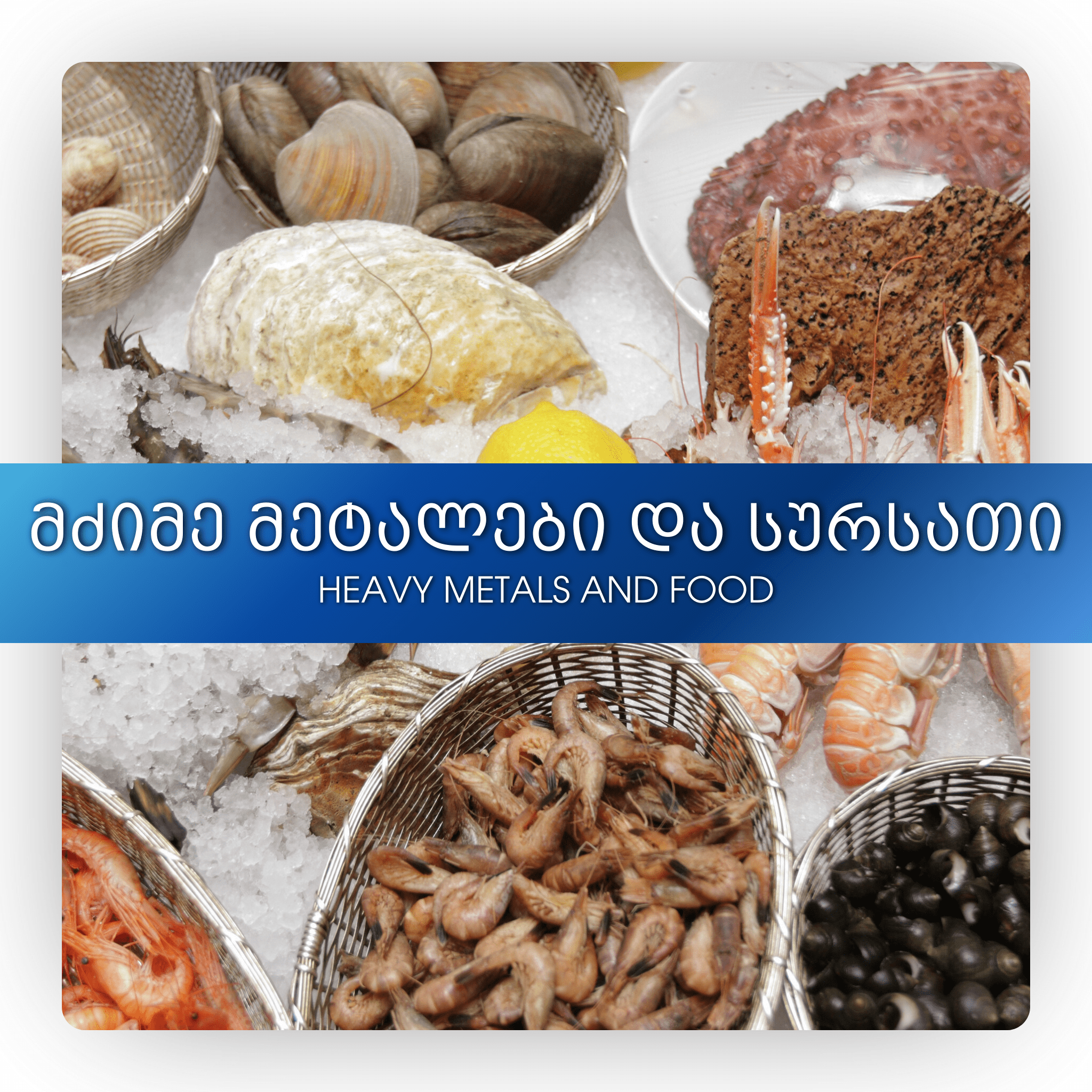Heavy Metals And Food
Metals, like other naturally occurring elements, enter our food supply through our air, water and soil. The levels found in food depend on many factors, including:
1. the levels of these elements in the air, water and soil.
2. the type of the food crop and how much “uptake” there is of specific elements from the environment
3. industrial, manufacturing, and agricultural processes.
In addition, some metals that are beneficial to health, such as iron, are intentionally added to certain foods. Since this contamination has so many different sources, there is a wide range of foods contaminated by heavy metals, including products of plant origin (cereals, rice, wheat, edible roots, mushrooms, etc.) as well as foods of animal origin (fish, crustaceans, mollusks).
In particular, fish is one of the products most affected by heavy metal contamination, because heavy metals are bioaccumulative in the food chain. When heavy metals accumulate in waters, fish ingest them through their diet and accumulate them over the course of their lives. The heavy metals then reach the consumer when that fish is consumed.
Many high-density metals are not especially toxic. Several of them are actually essential elements for human beings, though at certain concentrations they may be toxic in some of their forms. However, there is a series of elements that, regardless of their form, could represent a major environmental problem. These are commonly referred to with the generic term “Heavy Metals.”
Mercury (Hg)- is considered to be a highly toxic heavy metal. It can be present naturally in metallic form (as mercury), or in the form of mercury salts. The most dangerous form of exposure is inhaled mercury, since it enters our body, accumulates, and remains for a long time.One thing that should be borne in mind is that mercury ought not be present in the food chain at all. It is not a natural element in foods. But it can enter our bodies through fish, because fish consume large quantities of mercury, which is one of the most prevalent heavy metals in seas and rivers.
Lead (Pb)- is a metal often used in residential installations and in metal alloys or chemicals, such as pipes, the manufacturing of paints, putties, and pesticides. It is one of the heavy metals that can most easily contaminate and extremely harmful to health. Lead enters the body through vegetables, meat, fruits, seafood, and wine . Tobacco smoke is another pollutant with a high concentration of lead.
Cadmium (Cd)-comes from zinc refining processes. It is a residual or a by-product of zinc.Cadmium is mainly present in the earth’s crust and is strongly absorbed by the organic material that forms the soil. then pass into plants, and often form a part of human or animal diets in the form of hazardous heavy metals.The foods that are potentially most susceptible to cadmium contamination are mushrooms, shellfish, freshwater fish, dried algae(for example nori), and potable water, among others.
Copper (Cu)- is a mineral of great importance for the development of human life. Care should be taken to include this element in one’s diet, but in its rightful measure. In high doses, copper is considered a heavy metal and provokes severe health disorders, such as anemia, stomach problems, and harm to the kidneys and the liver.
Copper is prevalent in our homes in pipes and cookware. From there, it passes into water and cooked foods. Copper is massively used in industry, which is why exposure to copper has become much higher than normal.
Heavy metals also include chromium (Cr), nickel (Ni) and selenium (Se).
It is necessary to actively control the level of heavy metals in human food (especially baby food), animal food and cosmetics.
Foods that help you detox from harmful heavy metals:
1. Blueberries- they contain natural aspirin that reduce the damaging effects of inflammation. They are also very high in antioxidants and have antiviral effects which prevent infections and protect cells from free radicals. Antioxidants are substances that help the body to eliminate free radicals, which are formed when heavy metals react with proteins and other substances.
2. Lemon-Fruits and vegetables high in vitamin C can reduce the damage caused by heavy metal toxins by acting as an antioxidant. Vitamin C helps convert toxins into a water-soluble form that may be eliminated easily from the body.
3. Garlic and onions - contain sulfur, which helps the liver detoxify itself. It is great for arsenic detox, as well as for lead detox. Garlic promotes the liver to produce detoxification enzymes which help filter toxins from the digestive system.
4. Flax, Hemp, and Chia Seeds-contain essential omega-3 fatty acids and are high in fiber. Fiber helps with cleansing the colon and omega-3 fatty acids reduce inflammation and are required in all liver functions, including detoxification. As fish and fish oils may contain heavy metals, especially mercury, it is not recommended to consume either fish or fish oil during detox, so seeds rich in omega-3 will provide the body with necessary essential fatty acids when cleansing.
5. Green Vegetables- are some of the most powerful heavy metal, environmental toxin- and pesticide-cleansing foods, mainly due to the chlorophyll they contain.
Chlorophyll helps the liver detoxify, increases blood oxygen levels, and purifies blood cells. So how to detox from aluminum poisoning, for example? Aluminum detox would require a large number of antioxidants, and the best way to do this is to add as many green leafy vegetables to your diet as possible.
Make sure you have enough veggies like broccoli, cucumbers, spinach, celery and arugula in your diet.
6. Beetroots- have an important role in the liver and eliminate toxins. Beets are full of vitamins like B3, B6, and C and minerals like magnesium, calcium, zinc, and iron.
These vitamins and minerals help the liver to break down toxins. A fiber component called betaine in beets promotes digestion to effectively eliminate all the harmful toxins from the body.
